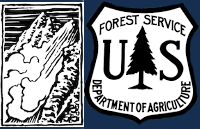By Doug Chabot. Poster presented at the 2004 ISSW, and published in the Proceedings of the 2004 ISSW, Jackson, Wyoming.
Articles
By Ron Johnson and Karl Birkeland. Paper presented at the 2002 ISSW, and published in the Proceedings of the 2002 ISSW, Penticton, British Columbia.
By Doug Chabot. Paper presented at the 2002 ISSW, and published in the Proceedings of the 2002 ISSW, Penticton, British Columbia.
A few years ago I was climbing in the Alaska Range. My partner and I were stuck 26 pitches up the first ascent of a mixed face five days into a seven-day storm. As I looked down the face covered with rockbands, couloirs and pockets of snow....
By Karl Birkeland. Paper presented at the 1998 ISSW, and to be published in the Proceedings of the 1998 ISSW, Sunriver, Oregon.
A Comparison Study of the Shredblock and Rutschblock Snow Stablility Tests by Andy Gleason. Presented at the 1998 ISSW, and to be published in the Proceedings of the 1998 ISSW, Sunriver, Oregon.
The Shredblock test is a field test to measure the relative instability of the snowpack in a backcountry setting with minimal equipment. The Shredblock test is based on the Rutschblock test but uses a snowboard instead of skis to load an isolated column of snow.
Methods
By Karl Birkeland and Cary Mock. Published in 1996 in Mountain Research and Development, 16(3), 281-286.
Karl Birkeland1, Ron Johnson2, and Scott Schmidt3
Abstract
I would love to know how many sets of tracks were wiped out in Sunday’s avalanche of the Football Field on Saddle Peak. If you carved a set consider yourself lucky. I’m going to guess that not many snowpits were dug and that the only form of stability assessment folks leaned on were that others had skied it beforehand. This was not smart. The avalanche broke during early morning avalanche control on the boundary of Bridger Bowl. An explosive was placed in-bounds, but the avalanche ripped out-of-bounds. Why?
Published in CBU November Newsletter
The day dawns cold and clear with a foot of fresh snow and the promise of incredible powder riding. At the trailhead, the surrounding landscape sparkles like a field of diamonds and the anticipation of a magical day in the mountains builds.
Sled covers are hastily removed and the machines are fired up - the smell of exhaust fills the air. Feeling confident about preparations, members of the group do a quick gear check and then hop on their machines, pinning their throttles towards the backcountry and a day of powder riding.
